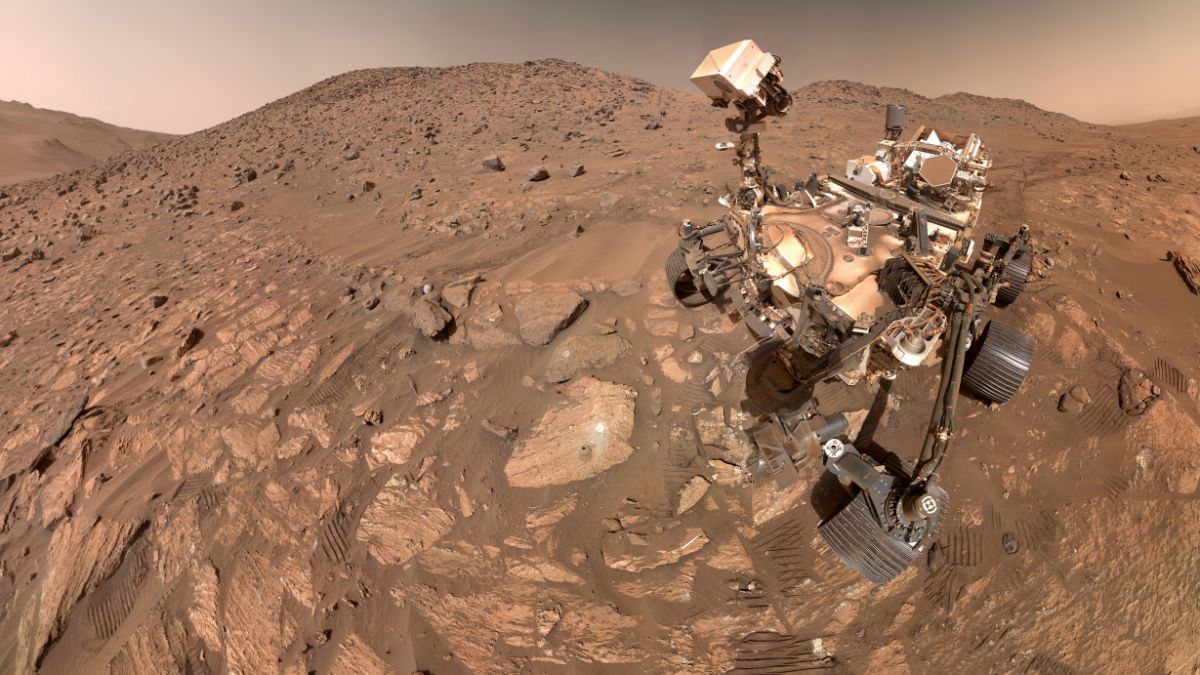Unusual rocks gathered by Nasa’s Perseverance Rover have revealed some of the clearest clues so far about possible past life on the Red Planet.
The six-wheeled rover made the discovery in the planet’s Jezero Crater, offering one of the strongest pieces of evidence yet that our neighbouring planet may once have supported life.
ALSO READ | Was Mars once home to oceans and 'vacation-style' sandy beaches?
According to the US space agency, the findings are important enough to meet what it describes as “potential biosignatures”.
So how do these rocks point to the strongest signs of ancient life? And what is Nasa saying about it?
Let’s take a look:
What happened?
The sample of reddish rock, believed to have formed billions of years ago from lakebed sediment, may hold signs of ancient microbial life on Mars, according to scientists.
The Perseverance Rover found these mudstones in a dusty riverbed. They are marked with unusual patterns called leopard spots and poppy seeds.
Researchers think these markings contain minerals created through chemical reactions that might be linked to ancient Martian microbes.
Collected last summer, the sample comes from reddish, clay-rich mudstones in Neretva Vallis, a river channel that once flowed into Jezero Crater.
This patch of sedimentary rock, known as the Bright Angel formation, was studied by Perseverance’s instruments before drilling began.
Today, Mars is a dry and cold desert. But billions of years ago, it had a thick atmosphere and water, which makes it a strong option for the search for past life.
Impact Shorts
More ShortsLead researcher Joel Hurowitz of Stony Brook University and his team discovered tiny specks, named poppy seeds and leopard spots, containing iron phosphate, iron sulphide and organic carbon, a basic ingredient of life.
For now, Hurowitz and his team are limited in how much more they can analyse using Perseverance’s instruments.
However, the rover was designed to collect several rock samples that could later be brought back to Earth for further study.
The only way to confirm if microbes created these minerals is to return the rocks to Earth for detailed analysis.
A joint Mars sample return mission has been proposed by Nasa and ESA, but its future is unclear.
The Nasa science budget is facing major cuts under Donald Trump’s proposed 2026 budget, putting the mission at risk of being cancelled.
ALSO READ | What will life be like on Mars? Isro’s Hope mission in Ladakh offers a clue
What are the researchers saying?
Sean Duffy, the acting administrator of Nasa, said at a press conference that the agency’s scientists had studied the data for a year and concluded that “we can’t find another explanation, so this very well could be the clearest sign of life that we’ve ever found on Mars - which is incredibly exciting.”
Nicky Fox, associate administrator for Nasa’s Science Mission Directorate, stressed that the team was not claiming to have found an actual living organism.
“It’s not life itself,” Fox said at the press conference.
Meanwhile, Janice Bishop from the SETI Institute and Mario Parente from the University of Massachusetts Amherst described it as an “exciting discovery” but noted that non-biological processes could also explain it. Notably, they were not part of the study.
“That’s part of the reason why we can’t go so far as to say, ‘A-ha, this is proof positive of life,’’’ said lead researcher Joel Hurowitz of Stony Brook University in an interview with The Associated Press.
“All we can say is one of the possible explanations is microbial life, but there could be other ways to make this set of features that we see.”
Hurowitz added that this is the strongest and most promising sample yet in the rover’s search for signs of ancient life. It was the 25th sample collected, and the total is now 30.
With inputs from agencies


)

)
)
)
)
)
)
)
)



